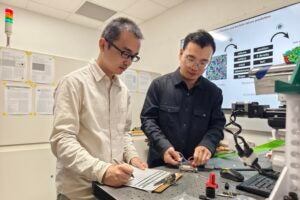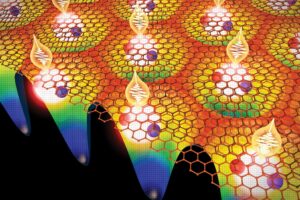har·mo·ny
ˈhärmənē/
noun
- the combination of simultaneously sounded musical notes to produce chords and chord progressions having a pleasing effect
- agreement or concord
- upper-body exoskeleton
- “human and machine in perfect harmony”
Meet HARMONY, a first-of-its-kind, two-armed, robotic rehabilitation exoskeleton. HARMONY provides a new method of high-quality, data-driven therapy to patients suffering from spinal and neurological injuries, including strokes.
Mechanical engineering researcher Ashish Deshpande and a team of graduate students from the Rehabilitation and Neuromuscular (ReNeu) Robotics Lab designed the exoskeleton to deliver full upper-body therapy. The robot “brain” ensures natural motion and tunable pressure and force from the machine, which feels weightless by patients who are using it.
“It was specially designed to offer customized therapy for optimal efficacy,” Deshpande says. “Not only does the exoskeleton adjust to patient size, it can also be programmed to be gentle or firm based on the individual’s therapy needs.”
HARMONY’s software will give therapists and doctors the ability to deliver precise therapy while tracking and analyzing data through a suite of sensors on the robot.
What sets this exoskeleton apart from existing technologies is its ability to accommodate the entire upper body, rather than just one arm. It connects to patients at three places along the upper body and features 14 axes for a wide range of natural motion.
“Just movement itself helps at the joints level and then it helps at the muscle level as well,” Deshpande says. “But then what we want to get at is actually the brain level, or the neural level. So if you had a stroke, you’d want to exploit what’s called brain plasticity, the ability of the brain to recover some function. To achieve that you want to move the body in the right fashion.”
The research team believes HARMONY has the potential to reduce a patient’s recovery time because it can adapt to the ways that humans learn, making course corrections throughout the course of a robot-guided exercise. Physical therapists can then tailor exercise regimens to each individual based on the data HARMONY collects.
“HARMONY is the culmination of years of research and development in the ReNeu Robotics Lab,” said Deshpande.
Healing through HARMONY. That’s how we change the world!



